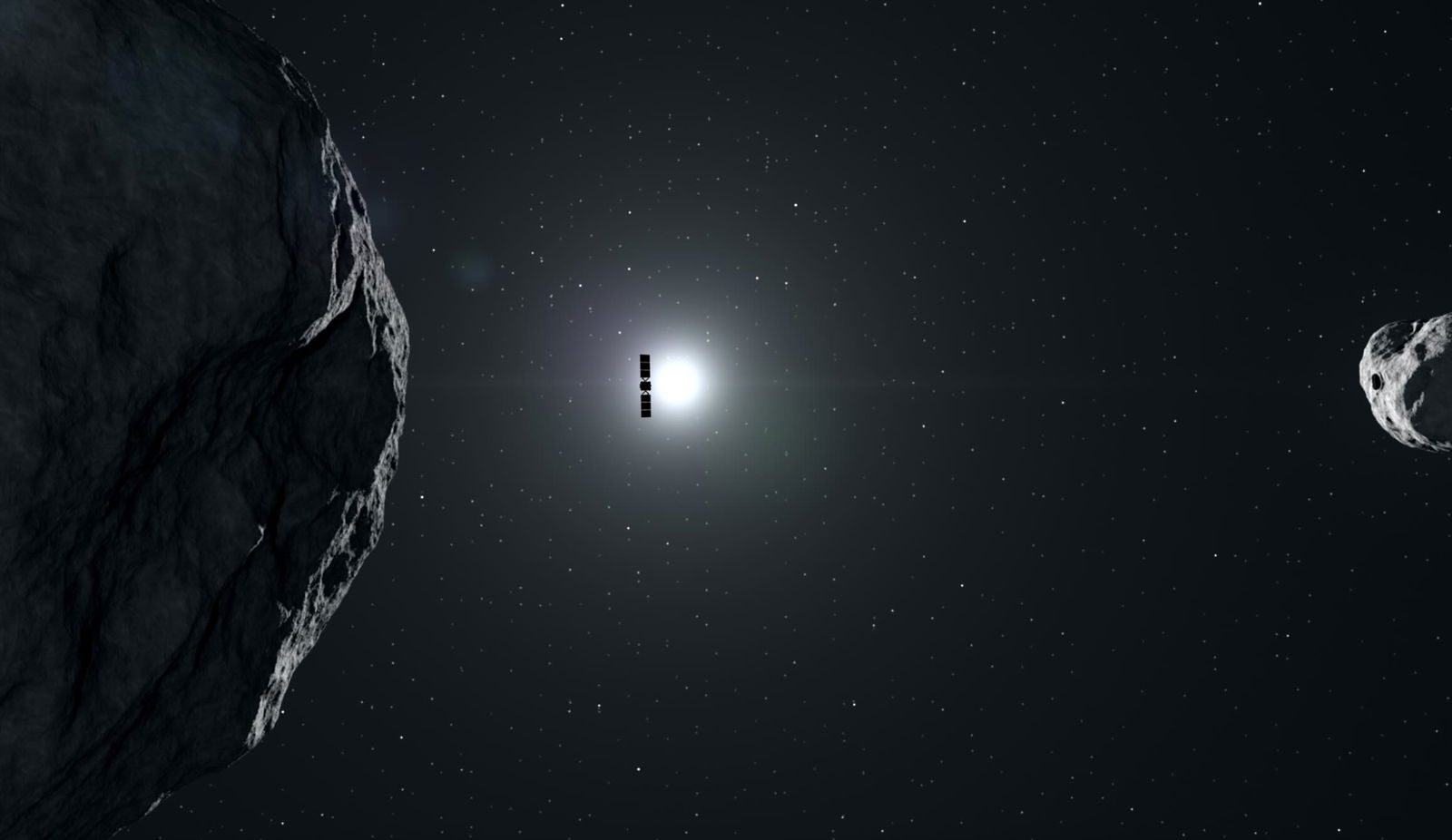SpaceX undertook a planetary defense mission on behalf of the European Space Agency (ESA) on Monday, aiming to provide scientists with tools to prevent future catastrophic cosmic impacts.
The ESA’s Hera planetary defense mission builds on NASA’s 2022 Double Asteroid Redirection Test (DART) mission and will analyze its effects, allowing scientists and engineers to gain a more comprehensive understanding for use in real-world emergencies.
A Planetary Defense Mission
In September 2022, NASA’s DART spacecraft collided with the asteroid Dimorphos, successfully demonstrating a proof of concept for asteroid deflection. The direct impact with the skyscraper-sized space object destroyed DART, but managed to alter Dimorphos’ path. After the collision, the asteroid’s orbit around a larger asteroid, Didymos, was significantly shortened by 32 minutes.
Images captured by a small cubesat ejected from DART just before impact, along with the Hubble Space Telescope, documented the mission’s success. However, detailed information remains limited, given that DART was destroyed upon impact and unable to transmit further data.
The Hera mission was initially intended to be in place before the DART impact to observe it in real time, but funding issues delayed its launch. Now, the European Space Agency has finally initiated the $400 million mission through a partnership with SpaceX. The 2,442-pound spacecraft launched aboard a Falcon 9 rocket from Cape Canaveral Space Force Station in Florida at 10:52 a.m. EDT on Monday. Unlike SpaceX’s usual focus on reusability, the rocket booster was not recovered, allowing it to continue propelling Hera beyond Earth’s gravity. Hera is expected to reach Dimorphos by 2026.
Averting Hurricane Milton
Weather concerns on Florida’s Space Coast almost postponed the launch, as rain and clouds spread across the region. However, the inclement weather held off just enough to allow the launch to proceed within acceptable parameters. This enabled the nine-engine rocket to begin its ascent on time, clearing the atmosphere before the expected landfall of Hurricane Milton.
Hurricane Milton posed a significant challenge for mission planners. Contingency plans were in place to postpone the launch and secure the Falcon 9 rocket and Hera spacecraft in a hangar if needed. Another mission launching from the nearby Kennedy Space Center, the Europa Clipper mission, was delayed from its Thursday launch and currently remains sheltered within a hangar, as Hera was almost required to do.
To meet its intended 2030 arrival date at Jupiter’s moon Europa, the Clipper mission must resume its schedule before its current launch window closes on November 6.
Journeying to Dimorphos
Mars will be the first stop on Hera’s cosmic journey, where it will collect new imagery of Deimos, one of Mars’ moons. From there, it will use Mars’ gravity to create a slingshot effect, propelling it toward Dimorphos. The spacecraft is expected to reach its target in about two years, coming as close as half a mile from the asteroid.
Once there, the mission’s critical work will begin. Hubble images have revealed a debris field of at least 37 boulders ejected during DART’s impact. Mission operators are divided on whether this debris will pose a significant hazard. The debris field and the impact site will be closely examined. Using cameras and other instruments, the team aims to determine if DART merely created a crater or caused a more substantial reshaping of Dimorphos.
One of the most critical aspects of the mission will be gathering data on the asteroid’s mass and internal structure, enabling scientists to better calculate the requirements for future deflection missions, should an asteroid pose a real threat to Earth.
Two small cubesats, about the size of a briefcase, were launched with the Hera craft. Named Juventas and Milani, these will work alongside the main Hera craft to collect data.
While Hera remains in orbit, Juventas and Milani will attempt landings on the asteroid’s surface. Juventas is equipped with a radar device to study the asteroid’s interior, while Milani will sample and analyze its mineral composition.
Ryan Whalen covers science and technology for The Debrief. He holds a BA in History and a Master of Library and Information Science with a certificate in Data Science. He can be contacted at ryan@thedebrief.org, and follow him on Twitter @mdntwvlf.

